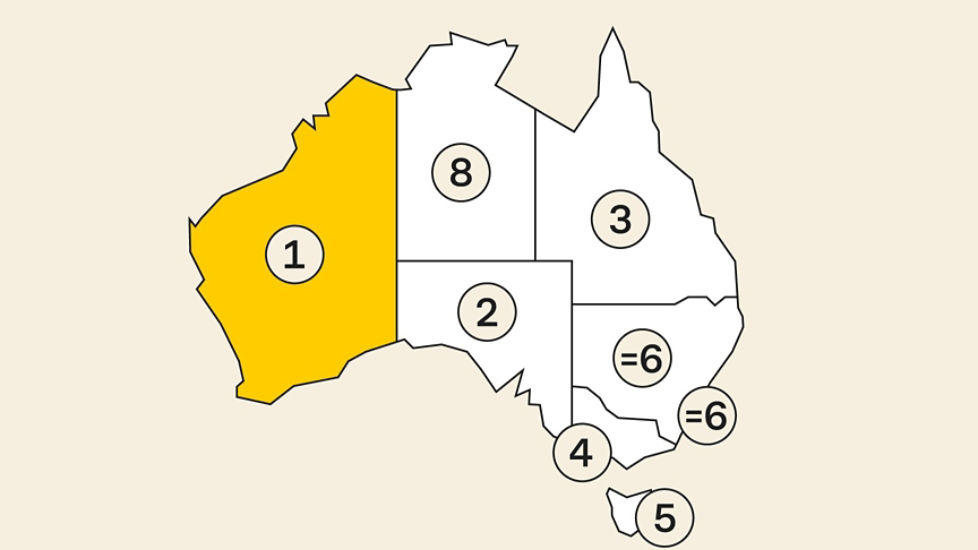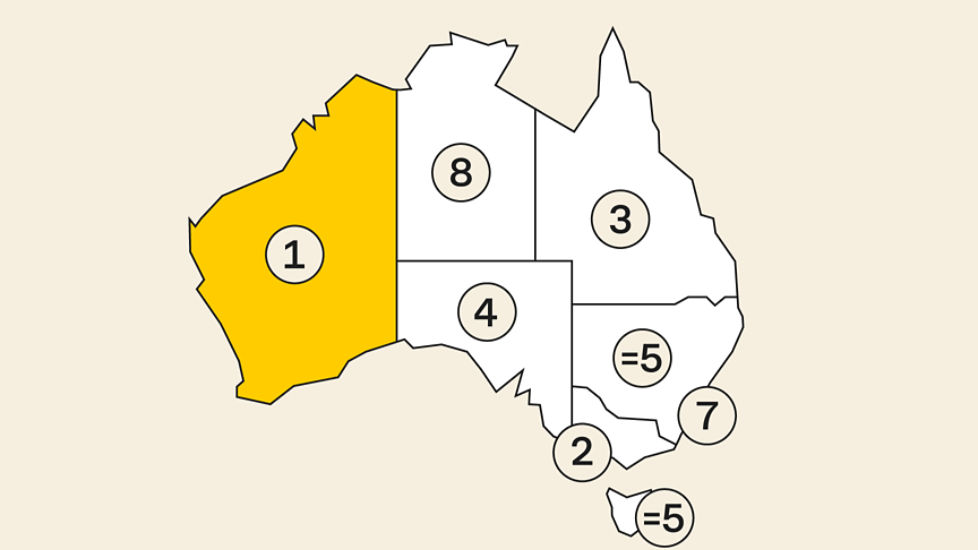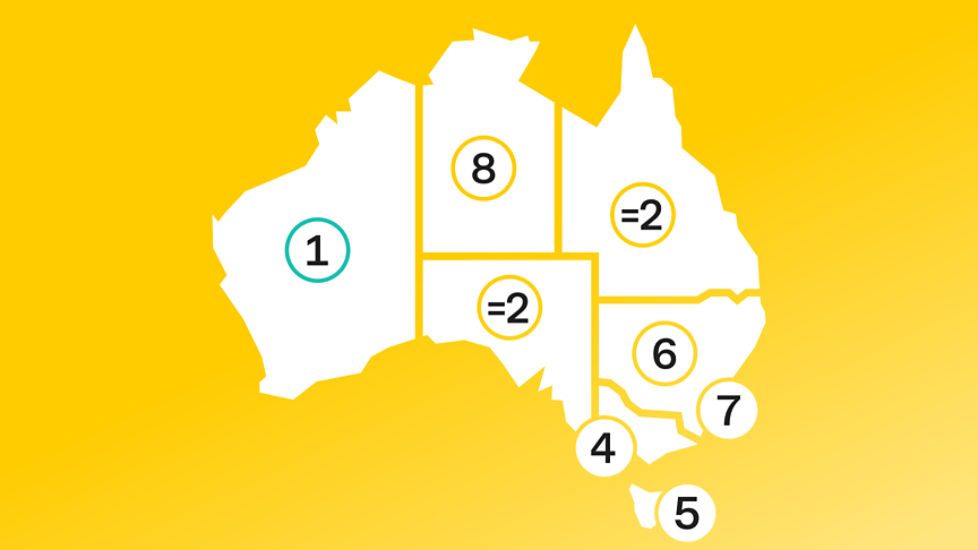WA remains out in front
The overall rankings measure how each economy is performing relative to its own decade average or “normal” level of activity.
Western Australia leads for the fifth straight quarter, ranking first on household spending, housing finance, dwelling starts and equipment investment.
Queensland has climbed to second, supported by consumer spending and housing strength. South Australia holds third, leading in economic growth and construction activity.
The Northern Territory was the standout improver, jumping from eighth to fourth on the back of strong population growth. Interest-rate sensitive Victoria, Tasmania, NSW and the ACT follow as public demand moderates and private investment gathers pace.
“Western Australia continues to perform strongly, underpinned by strong population inflows, resilient household spending and ongoing government support,” said Chief CommSec Economist Ryan Felsman.
“Queensland’s economy is rebounding following weather-related disruptions earlier in the year with exports stabilising, while the public investment outlook is promising in the Sunshine State due to planned Olympic infrastructure projects.”
“Lower borrowing costs will eventually support the transition from public-to-private sector-led economic activity in Australia’s south-eastern states and territories,” said Felsman.
Growth accelerates in SA and NT
CommSec also tracks more recent economic momentum, the pace of annual growth across the same eight indicators.
On this measure, Western Australia again leads, closely followed by South Australia and the Northern Territory. These states are showing the strongest acceleration in private sector activity and spending growth.
Outlook
Looking ahead, resource-driven states are expected to maintain their advantage into 2026 as easing inflation, lower borrowing costs and rising real wages support demand.
“Western Australia, Queensland and the Northern Territory are best positioned heading into 2026,” Felsman said. “The key question now is whether the private sector can sustain the recovery as public investment tapers off.”







